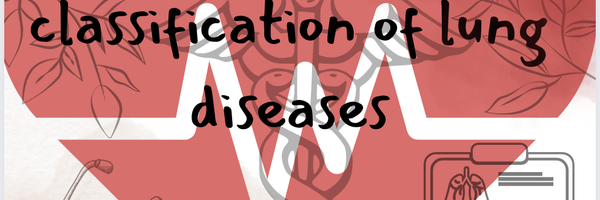identification of different lung dieases.
Grade 9
Presentation
Problem
Lung infections claim numerous lives yearly , causing grief. A classifier can significantly improve early detection and management. A classifier excels in swiftly analyzing medical imaging, like X-rays and CT scans. So my question is:
how can we uses classifier to identify lung disease??? And how do we make it??
Method
my method in completing my project is machine learning, i will make a code using image recognition so that the classifer can detect the certain diseases, then we train the classifer into accurately predicting what diease it is.
Research
COVID19, came as a worldwide pandemic, in late 2019, causing an important and big impact on public health, shopping, and much of our daily lives, instead of shopping and doing a daily routine, bingeing netflix or crave became our 24/7. This disease spreaded (and still does) through the respiratory droplets, causing multiple different symptoms, from simple lung problems to severe lung problems.it can be spread in multiple different ways, but one vivid problem is that its transferred by air, the infected person’s mouth or nose in tiny particles. Many people have faced death due to this disease and it is quite deadly, and being deadly it causes a rise in vaccine campaigns, and finally they find a range of vaccines.
Tuberculosis(tb) is a big bacterial infection caused by mycobacterium. Ir mainly affects the lungs, but can 100% affect other organs. It spreads through air droplets, when the infected human coughs or sneezes. TB has been a longstanding world health concern, but efforts to eliminate the particle have been taken; for example, testing everyone working in the medical field, and still finding a way to efficiently end the disease on the human body. About a quarter of the world is approximately affected by TB, and this continues. The 1 ⁄ 4(quarter) of the world who have TB can usually be cured by antibiotics(longstanding treatment) and can be severe without treatment.
Viral pneumonia is the result of infections, for example; influenza, RVS(respiratory syncytial virus), and even COVID-19. These bacteria in the infection, can cause inflammation in the lung tissue, affecting the normal duties of the respiratory. The symptoms of the viral pneumonia can range from gentle and easy to severe, with multiple complications coming to people with weakened immune systems or other health conditions. BUT this disease is preventable, but washing your grubby hands, and face(HYGIENE), take either the flu, or COVID-19 vaccine which both try to prevent pneumonia, and other lung disease, and lastly but the most important, do not SMOKE, don’t smoke tobacco, or weed, or ANYTHING, this damages the ability to defend the lung from infections.
Bacterial pneumonia is a disease hurting the lung tissue caused by horrible bacteria, like most lung diseases. Just like viral pneumonia, BP can cause inflammation of the lungs, and difficulty breathing as many of the symptoms, like cold, fever, and shortness of breath. THe main difference between the 2 is BP is more severe and way more common than VP but since they are so similar, the way doctors can differentiate them, is by grabbing a urine sample(pee). BUT both are not too different from each other.
what is image recognition?
Image recognition, aka computer vision, is a growing area of artificial intelligence that gives machines the ability to interpret and recognize visual images. This mechanism requires advances in algorithms and models that enable computers to detect patterns and objects in visual designs given to the computer. Advanced deep learning. For example (CNN’s) convolutional neural network has improved the accuracy of the image recognition system. The system can locate and classify objects and understand context.
how does image recognition work?
Image recognition works throughout multiple different algorithm designs to mimic(kinda) human visual systems. The process of image recognition begins with collecting a range of pictures, and label it training data (or find a dataset of your kind), this can ;et the algorithm that you build to recognize patterns.During the training of the AI, the code adjusts the parameters, and feature, so it can minimize the difference between all the photos. Once the AI is trained, the model is able to recognize any unsee pictures, this is where the testing data comes in. We can now input a group of photos(test data) that the AI hasn’t seen and based on that certain group it will make predictions, and give us a percent of accuracy
Data
for my first baseline code, and accuracy for each of the diease were
Classification Report:
precision= accuracy
Batercial pneumonia= 63%
Viral pneumonia = 74%
Tubercolsis = 69%
Covid-19- 74%
Normal = 82%
average = 73%
Conclusion
- SUMMARY
- what could happen if improved-
|_> hospitals
|_> further in the world. -> since it doesn't cost that much mney-> the places with lower resources can be able to affors it.
- if improved what could happen
|_> death rates
Citations
- AI Plain English. "Creating a Neural Network for Image Recognition with Keras in Python." Medium, Plain English,https://ai.plainenglish.io/creating-a-neural-network-for-image-recognition-with-keras-in-python-1f285bc48f13 .
- V7 Labs. "Image Recognition Guide." V7 Labs,https://www.v7labs.com/blog/image-recognition-guide .
- TIBCO Spotfire. "What is a Neural Network?" Spotfire, https://www.spotfire.com/glossary/what-is-a-neural-network .
- TechTarget. "Image Recognition." TechTarget,https://www.techtarget.com/searchenterpriseai/definition/image-recognition#:~:text=For%20example%2C%20when%20someone%20uploads,the%20individual%20in%20the%20image
- Mayo Clinic. "Tuberculosis - Symptoms & causes." Mayo Clinic, https://www.mayoclinic.org/diseases-conditions/tuberculosis/symptoms-causes/syc-20351250 .
- American Lung Association. "Pneumonia Symptoms and Diagnosis." American Lung Association, https://www.lung.org/lung-health-diseases/lung-disease-lookup/pneumonia/symptoms-and-diagnosis .
- WebMD. "Bacterial Pneumonia: Symptoms, Causes, Treatment." WebMD, https://www.webmd.com/lung/bacterial-pneumonia.
Centers for Disease Control and Prevention. "Symptoms of COVID-19." CDC, https://www.cdc.gov/coronavirus/2019-ncov/symptoms-testing/symptoms.html.
- Kaggle. "Lungs Disease Dataset (4 Types)." Kaggle, https://www.kaggle.com/datasets/omkarmanohardalvi/lungs-disease-dataset-4-types .
Acknowledgement
- I acknowledge my mother, my father, and my dearest awesome brother.
I acknowledge the people from juniotech, who helped me along the way, especially irada, and tim
I acknowledge ms.lai for giving me this opportunity
And lastly i acknowledge Izabela Sztukowski for helping me with my research on lungs.

